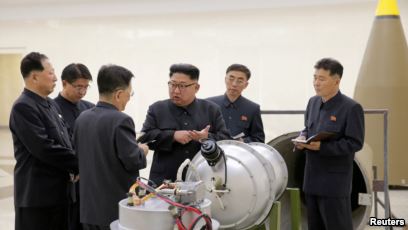What to Expect in Trump-Kim Summit 2.0 By Jun Kwon and Sung Jang
Amidst concerns of a lack of progress on denuclearization of North Korea, Donald Trump declared in his State of the Union address that “Chairman Kim and I will meet again on February 27 and 28 in Vietnam.” While this State of the Union address did not contain as much references to the situation on the negotiations between the two countries as it did in the previous address, it nevertheless inferred Trump’s commitment to dialogue with North Korea, whatever the reasons may be. As such, it is likely that this is the second of many summit meetings between the United States and North Korea to come.
Why Vietnam?
Like Singapore, the selection of Vietnam as a place to host the second summit is geopolitical in nature. Vietnam, like Singapore, maintains cordial relations with all parties attending the summit, the two Koreas and the United States. Vietnam’s cordial relationship with North Korea stems their common political ties during the years of the Cold War when Vietnam and North Korea had modest amounts of interactions, both economic and political. South Korea and the United States’ relationship with Vietnam has developed as a result of investments into Vietnam as early as the late 1980’s for South Korea, and 1995 after diplomatic normalization with the United States. As Vietnam is home to a large amount of Korean expatriate workers, a trustworthy partner to North Korea, and core domino in the United States’ foreign policy in Asia, it is one of the ideal places to host the next summit.
Photo by KCNA
What to Expect
In accordance to the third clause of the joint statement between Donald Trump and Kim Jong-un in Singapore, the main issue of discussion will be the “complete denuclearization of the Korean Peninsula”. In contrast to the first summit, the outcome of the second summit would most likely be more substantive in policy on the issue of denuclearization. The United States would most likely seek tangible measures from North Korea showing that they would denuclearize, possibly with the dismantlement of the Yongbyon nuclear weapon’s development facilities. North Korea on the other hand will try to negotiate for the lifting of some economic sanctions in return for their nuclear disarmament.
It is important to note that considering the duration of this summit, it is unlikely that the two sides would come up with a comprehensive agreement on all matters regarding the nuclear situation on the Peninsula. Much like the Iran Deal, the United States is looking de-weaponized North Korea when it comes to nuclear weapons rather than denuclearize it completely. The immediate goal of the United States from this summit will be the elimination of the delivery methods that North Korea has. This would mean the dismantlement of ICBM delivery systems and a freeze on any further missile developments. This would at least ensure the security of the mainland United States against any potential nuclear threat from North Korea.
Photo by CNN
On the North Korean side, they are most likely seeking the lifting of some economic sanctions from the United States and some tangible security guarantees that the United States would not take military action against them. This is in line with Kim Jong-un’s main policy goal, “Byung-jin politics”; the maintenance of a strong military whilst supporting economic growth. Achieving the goals set out by the Byung-jin politics is crucial to Kim Jong-un as he sees it as a source of his legitimacy as the leader of North Korea. This is similar to how his grandfather Kim Il-sung established the “Juche” ideology, and how his father Kim Jong-il established “Songun” military-first politics. Some of the sanctions on North Korea that may be lifted include the unfreezing of overseas North Korea assets and funds in international banks, and the green light for South Korea to resume joint economic ventures with North Korea.
In order for there to be tangible progress, compromise and understanding will be key from both sides. The traditional methods that the United States has used to denuclearize North Korea such as the Comprehensive Verifiable Irreversible Disarmament (CVID) of nuclear weapons prior to the lifting of sanctions have failed in the past. If the United States wishes to succeed in successfully creating an agreement with North Korea, it may have to pursue the denuclearization of North Korea through step-by-step diplomacy where North Korea would disarm and denuclearize bit by bit in exchange for the gradual lifting of sanctions and security guarantees. If the United States continues with its CVID approach, it is likely that the conclusion of this summit will be similar to the Six Party Talks held in 2009 where there is much conversation, but little result.
Jun Kwon is Chair of International Studies and Assistant Professor of Government at Utica College. Sung Jang is government student at Utica College.







